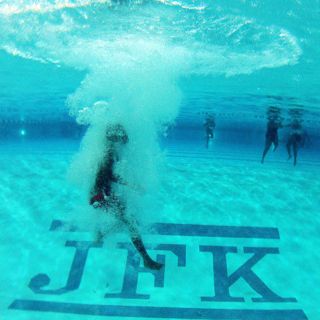JFK: 50 Years On, Millennials Cross-Examine Boomer Veneration
DALLAS (Reuters) – In a Dallas college classroom about six miles from where John F. Kennedy was gunned down half a century ago, members of the millennial generation have been learning why the assassination was a life-altering moment for so many in the baby-boom generation.
For years, Tom Stone has offered a course at Southern Methodist University designed to teach students what matters about the Kennedy presidency and that fateful November 22 in 1963.
“Most students, it’s fair to say, just know that JFK is the president who got shot. Beyond that, they’re pretty much blank slates,” Stone said.
This semester he has been co-teaching a special course with political science professor Dennis Simon to coincide with the 50th anniversary. One difficulty is how to convey the larger turmoil created by the assassination to students with no frame of reference for cold war paranoia, the turbulent 1960s, and the romanticism attached to 1,000 days described as “Camelot.”
“They don’t know much about his presidency or why anyone would have wanted him dead,” Stone said.
Many millennials – those who came of age after 2000 – will meet the anniversary with a shrug. Some may watch the Zapruder film of the motorcade on YouTube or follow the “#JFK” hashtag on Twitter.
For Garrett Fisher, a 19-year-old student enrolled in the SMU Kennedy course, the occasion is a chance to reflect on a president who steered the nation away from the brink of nuclear war during the Cuban Missile Crisis and whose personal failings included extramarital affairs.
“Our professors are exposing us to different writers who show multiple images of him as a person, not just a president, and we have to interpret that for ourselves,” Fisher said.
Stone and Simon have presented contradictory works about Kennedy’s administration and encouraged students to examine various assassination conspiracies.
“There are writers that make the case that JFK was a great friend of civil rights and others who say he dropped the ball on it. Some say he saved the world during the missile crisis and others say he brought it on himself with his recklessness in cold warriorism,” Stone said.
Scott Reich, who wrote the recently released book “The Power of Citizenship: Why John F. Kennedy Matters to a New Generation,” said the anniversary is diverting the attention of younger Americans toward conspiracy theories and away from the enduring values of the Kennedy years. As boomers die off, it’s questionable whether the younger generation will absorb more than what they need to regurgitate for a history exam, he said.
“In looking at Kennedy’s presidency, I believe we can learn quite a bit about our responsibilities as individuals and how we can work together to achieve big goals as he did with the Peace Corps, the race to the moon, and civil rights,” Reich said.
A CALL TO SERVICE
Fifty years ago Kennedy had rock-star status among many college students who were inspired by his call to do something for love of country.
Baby boomers came of age in the post-World War Two peace and prosperity that made the United States a superpower and saw its population increase by about 30 percent in the 15 years from the end of the war to the 1960 presidential election.
John Bewick, a graduate student studying nuclear science, waited for hours to hear Kennedy speak at the University of Michigan during the 1960 campaign. While he discussed the concept of public service overseas, it wasn’t yet part of his campaign message.
“As we’re trying to figure out what we’re going to do with our lives, it was a compelling moment,” Bewick said.
The Peace Corps was launched a year later under President Kennedy. Bewick signed up in 1963 and was preparing to teach university physics in Nigeria when news broke of the assassination.
“That was just a horrible moment. But it didn’t deter anybody from what we committed to do,” said Bewick, who later became an environmental consultant.
There were 51 volunteers in the first Peace Corps deployment in 1961. Five years later, more than 15,000 people were serving in the field, according to Peace Corps data.
The four days between the assassination and the Kennedy funeral transfixed the world. John Christopher, then a 10th grader in Fort Worth, where Kennedy’s motorcade passed before going to Dallas, helped spread the news about the shooting.
“I was paperboy for the Fort Worth Star Telegram and delivered five extra afternoon runs that day,” Christopher said.
The morning headline of three benign words – “WELCOME, MR. PRESIDENT” – was replaced by the later edition’s shattering five: “KENNEDY SLAIN, CONNALLY ALSO HIT.”
Cynicism grew in the wake of the assassination, especially after many asked if Lee Harvey Oswald acted alone or if the killing had been in retaliation for a foreign dispute, said Jeffrey Engel, director of SMU’s Center for Presidential History.
Sorsha Huff, a student at SMU, often drives past the spot in Dealey Plaza where Kennedy was shot. As a result of the Kennedy course, Huff said her perspective on the president transformed from wholly favorable to more realistic as she was challenged to think more critically.
“All heroes have their flaws and hidden faces – no one is a one-dimensional caricature,” Huff said. “JFK made mistakes. Our class readings force us to question the image that we’ve learned to love of this mythic president.” (Editing by Jon Herskovitz and Prudence Crowther)
Category: Articles




































